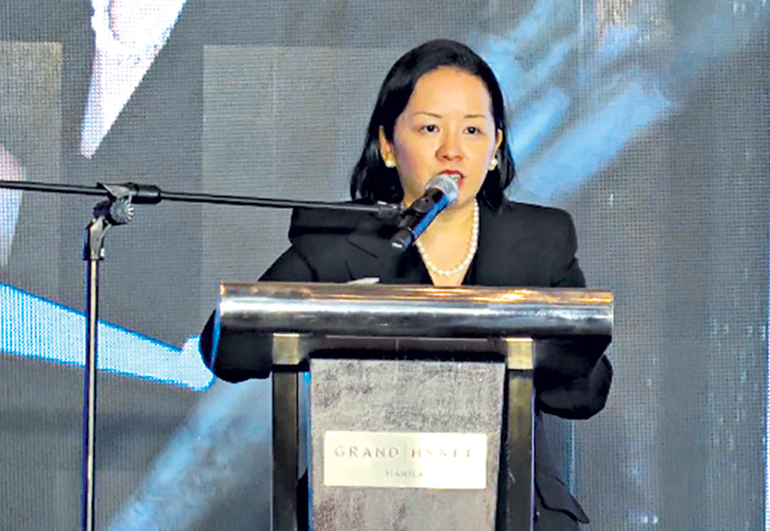
BusinessWorld’s growth amid an ever-changing media landscape
By Bjorn Biel M. Beltran, Special Features and Content Assistant Editor
The story of media has always been one of constant change. The printing press gave rise to radio, which then gave way into television, each new medium expanding the reach of information further than ever before. What once lived exclusively in newsprint became available as pixels on a computer screen. Today, every headline, broadcast, and television program can be accessed through a mobile phone — literally an entire world of information at the swipe of a finger.
But while change is inherent in media, this does not make it any easier for those who have built their legacies within it. The media industry in a way is an empire built on sand that is constantly shifting with the tide of technology — one that lives by one eternal rule: adapt, or become irrelevant.
Miguel G. Belmonte, president and chief executive officer of BusinessWorld, has been keenly aware of this since assuming his position nearly a decade ago.
“The media landscape is in some ways very different from what it was for so many years before. Whenever there were issues concerning traditional media back then, we always knew immediately how to handle it. It was practically second nature to us,” he recalled in an interview.
“The world has changed so much. I have to admit that sometimes, I worry about it.”
When he joined the company back in 2015, BusinessWorld was already struggling to adjust to a world that was becoming increasingly digital very quickly. It took only a few years of refining its operational strategy and strengthening its core for the company to turn it around.

Now, on its 37th anniversary, BusinessWorld has become not only the leading business newspaper in the Philippines but a formidable multimedia presence. Despite a multitude of challenges, BusinessWorld has found success for itself in hosting events and conferences, and gaining substantial revenues from advertising across different platforms, to the point that it had even started outperforming its print-era earnings.
Mr. Belmonte attributes this success to the company’s focus on its niche market and strengths, rather than trying to compete directly with other English broadsheets in the country.
“Before, it was really so basic. We earned from advertising and circulation. Those were really the two main revenue-generating departments,” he said. “It’s not that way anymore.”
“One of the things that we’re doing better now is to determine our niche, where our strength is. We don’t try to compete with other broadsheets. We don’t try to step on their territory. What we’re doing is we develop our own territory. We build on that, we defend it, we continuously try to grow within that territory. That has proven to be very successful so far,” he added.
This strength lies in BusinessWorld’s journalistic reputation and credibility. Editor-in-Chief Cathy Rose A. Garcia noted that BusinessWorld has always provided insights into market trends, corporate developments, and economic policies, and this forte has never changed since the company’s foundation.

“We have always been a key resource for business professionals, investors, and policy makers,” she said. “BusinessWorld also provides a platform for discussion and debate on important economic and business issues. Through our business news reporting, we aim to help the public understand complex issues, policies, and trends facing the Philippines. For instance, our analysis reports aim to help the public understand how policy changes may impact [not only] the economy but also their lives.”
The emphasis on clear and accurate reporting is paramount. “We want to demystify business and finance for a broader Filipino audience, especially the younger generation. Financial literacy is very important. When individuals and businesses make informed financial decisions, this can lead to a stronger and more resilient economy,” she added.
As the way audiences consume news is constantly evolving, however, and it is not always easy to find the best method to achieve this goal. Associate Editor Bettina V. Roc said that nowadays, news organizations have to compete with content creators on social media platforms, forcing them to experiment with new, more easily digestible methods for news delivery like short-form reels.
“Since I edit for the newspaper, the written medium still allows for context and background, which I feel is largely omitted when social media is used for reporting,” she said.
And while concessions have to be made to more effectively inform the public — she herself admits to actively limiting her use of technical jargon in editing stories — the standards of journalism remain the same as ever.
“Regardless of medium, I still stand by that principle, along with accuracy and fairness, when covering stories or deciding which articles to prioritize. I think it should never come to a point where journalism values have to be sacrificed for the sake of being first, riding on a trend, or getting the most clicks,” she said.
Not all change is good, after all. Associate Editor Arjay L. Balinbin noted that the most recent shake-up in journalism, the coronavirus disease 2019 (COVID-19) pandemic, saw many journalists adopt a hybrid or even fully virtual model of covering news. But while such virtual formats provide more convenience and efficiency, they come with the irreconcilable drawback of having limited access to sources and in-depth information.
“Balancing traditional journalism values with the demands of the digital age means upholding standards of accuracy, fairness, and thoroughness, while leveraging digital tools for broader audience engagement,” he said.
For Mr. Belmonte, he is content in leaving BusinessWorld’s future in the hands of the company’s new generation of editors and reporters.
“I believe in our young team. And I know that the future of our company is more in their hands than it is in mine or my generation,” he said.
“My position is that I’m going to put my trust on our young people to determine the direction that our company will take. We’re just going to support them and guide them where we can guide them.”
The faith in the next generation is mirrored across BusinessWorld’s leadership. Executive Vice-President Lucien C. Dy Tioco acknowledged that the past few years at the company have been turbulent, particularly because of the accelerated adoption of digital platforms that resulted from the pandemic, but he sees these challenges as opportunities to innovate.

“In my years of experience being in the media business, I have kept my competitive edge by building a culture of innovation,” he said. “Even with the challenges that print has faced, innovation has kept us excited over the opportunities over the threats.”
He further explained that by strengthening what BusinessWorld is and by taking care of its equity, its command of influence, and its engagement with the business community, the company continues to remain a strong and reliable partner for both its audience and its advertisers.
“First and foremost, we help brands and companies bridge their business objectives through our platforms and the community, industry and government sectors that we are engaged in. I am proud to say how much we kept our advertisers through our multimedia initiatives,” he said.
“The very purpose of BusinessWorld is to grow our business community by igniting programs and initiatives that will keep our economy healthy and progressive, where a vast amount of wealth and opportunities will be spread to the Filipino people. This is what keeps us inspired to keep innovating.”
Vice-President for Sales and Marketing Jay R. Sarmiento pointed out that for BusinessWorld, the pivot to digital and events while maintaining its presence as a print newspaper has been instrumental in sustaining the business and making it even more profitable post-pandemic.
“Transformation does not necessarily mean technology. Transformation can take the form of ways, culture and even mindset,” she added.

As for the future, Mr. Belmonte hopes that would be enough. In an ever-changing industry like media, nothing is ever assured. What was once tried-and-true may not be so a few years down the line. After all, a few decades ago all they had to think to make a profit about was advertising and circulation. Digital transformation, audience engagement, and content diversification may be enough today; but what of tomorrow?
“We’re still looking,” he said. “We’re still experimenting.”



